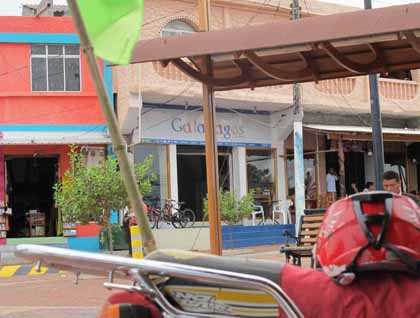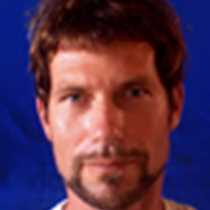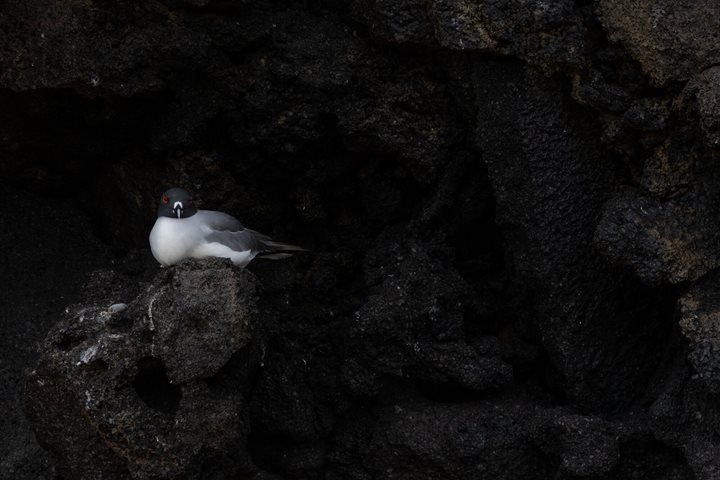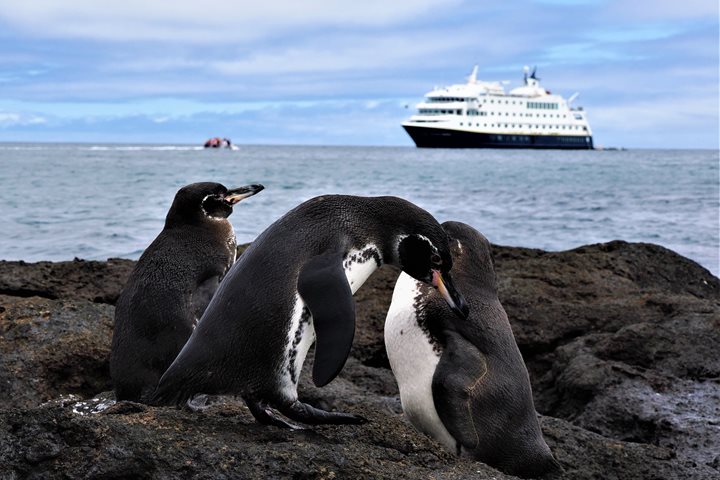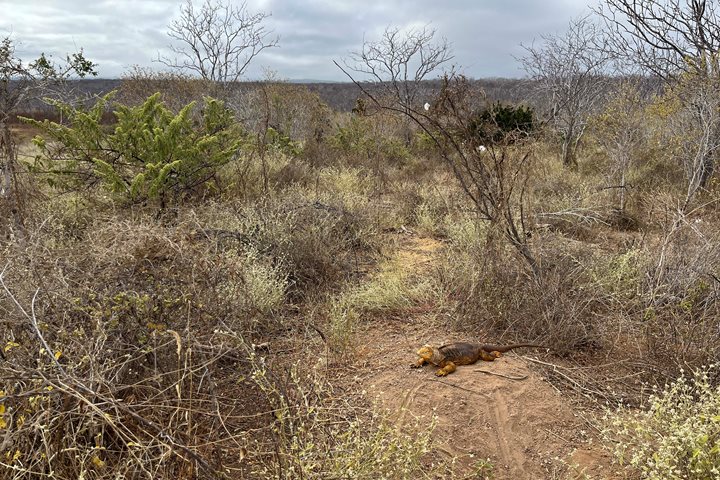Today the National Geographic Endeavour anchored at Academy Bay, named after the 1904-1905 expedition of the Academy of Sciences in San Francisco. Academy Bay faces south, is about a half-mile across, and gives access to the biggest port in the Galapagos, Puerto Ayora. Although not the capitol, Puerto Ayora is the biggest town in the islands, with about 20,000 inhabitants. We are here because of the tortoise rearing center that re-established three mayor tortoise populations - to learn about how this was done, what difficulties were encountered, and how the current sub-species of giant Galapagos tortoises are doing.
The center is situated in a primary dry coastal forest of which the giant prickly pear cacti stand out. Scurrying on the ground and in the cacti we spotted some ground cactus, and the occasional tree finch. After the visit we had some time to explore the town a little, which is a sensory experience especially after the calmness of the two last days. Puerto Ayora has grown very rapidly, especially over the last few decades, and this made for an interesting walk.
Not much later we met up in a small café from where we took coaches into the hills of Santa Cruz. I was part of the group that did a pre-lunch school visit, where we met the current school director, Barbara, who gave us a very informative tour. Galapagos has a quickly growing young generation and the Galapagos Conservation Fund helps out this school to give children the opportunity to get an education with more emphasis on the importance of these islands. Everybody in the group enjoyed the visit after which we continued to our lunch destination.
After lunch we headed out to see tortoises again, but this time in a more natural setting. We had some rainfall but were prepared and didn’t mind the relative coolness the rain brought. The scene of these living remnants of a world long gone was for many of us one of the main reasons to do this trip, so in that sense everything fell into place. The hills of Santa Cruz are very lush, the trees are densely packed with mosses and lichens, and the tortoises were grazing or resting in large numbers. All of us got private time with one of these giants.
After the visit we went back to the port town where we had the opportunity to wander around for a few more hours or go back to the ship. The town comes alive in the afternoon and many locals gather around the dock, mixing with the international visitors of Galapagos and creating a very special mélange.
Once back on board we heard guest speaker Sven Lorenz, the current director of the Charles Darwin Research Station, explain the dynamics of the center and the focus of their research. To top all that we enjoyed traditional Ecuadorian music after dinner and some of us finished the evening dancing and singing along with the merry tunes of the band.

